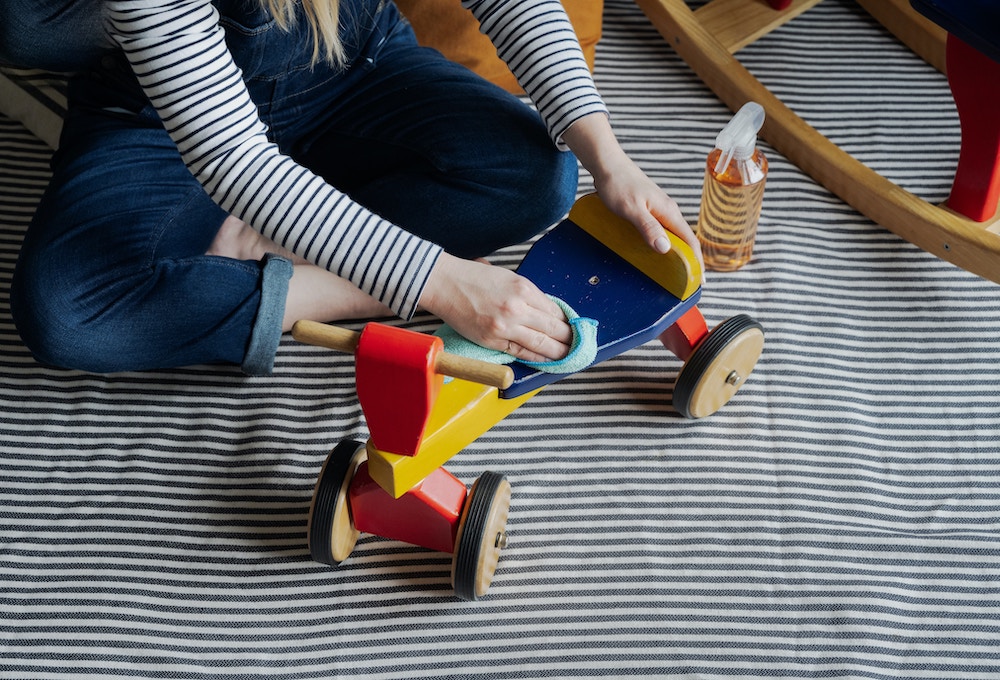As a parent, ensuring the safety of your children is always a top priority. With the countless number of toys available on the market, it’s essential to understand the potential hazards associated with them. In this comprehensive guide, we’ll discuss common toy safety hazards and provide tips to help you make informed decisions when choosing and maintaining toys for your kids.
Common Toy Safety Hazards
Choking Hazards
One of the most significant risks associated with toys is choking. Small parts, loose components, or even detachable features can pose a choking hazard, particularly for children under the age of three. According to the Consumer Product Safety Commission, choking is a leading cause of toy-related injuries, so it’s important to keep our young one safe and protected as best as possible.
Sharp Edges and Points
Toys with sharp edges or points can cause injury, especially for younger children who are still developing their motor skills. Be cautious with toys made from thin plastic, as they can easily break and create sharp edges. Also, avoid giving toys with metal parts to toddlers and infants.
Toxic Materials
Toys containing toxic materials, such as lead paint or harmful chemicals, can cause long-term health problems if ingested. Be mindful of choosing toys made of natural materials, like cotton, wool, and uncoated wood. Look for labels that indicate the toy is phthalate-free, PVC-free, and BPA-free.
Loud Noises
Toys that produce loud or shrill noises can potentially damage your child’s hearing. Before purchasing, test toys in-store to gauge their volume and read warning labels to understand how to use them safely.
My Apple Watch even gives me noise monitoring warnings when I am drying my daughters hair so it’s important to be mindful of all loud noises in the house.
Strangulation Hazards
Toys with cords or strings longer than 7 inches can pose a strangulation risk for babies and very young children. Never hang toys with strings, cords, or ribbons in cribs or playpens, and remove crib gyms when your child can pull up on their hands and knees.
Projectile Toys
Toys that shoot or launch objects can cause eye injuries. Avoid toys that can fire items not intended for use, such as pencils or nails. For older children using projectile toys, provide safety glasses and ensure arrows have soft tips made of cork or rubber.
Electric Toys
Electric toys can pose risks, such as burns or electrocution. Only purchase toys labeled “UL Approved” (Underwriters Laboratories). Ensure battery-operated toys have a secure cover that closes with screws to keep batteries safely inside the toy.
Toys with Magnets
Toys with magnets can be dangerous if swallowed, potentially causing injury or death. Young children should not play with toys containing magnets, and older children should be warned against putting magnets in their mouths.
Magnatiles are a great option for kids 3 and up that can teach them about how magnets work and reduce some riks (since the magnets are within the pieces themselves).
Tips for Choosing and Maintaining Safe Toys
Age-Appropriate Toys
Select toys that match your child’s age, interests, and abilities. Most toys come with an age grading to guide you in determining their safety and suitability.
Inspect Toys Regularly
Check toys frequently for damage, such as splinters or sharp edges on wooden toys, and sand them when needed. If repainting toys, use new paint, as old paint may contain lead. Dispose of any toys that cannot be fixed.
Proper Storage
Store toys in a safe place, keeping them off the floor when not in use. If using a toy chest, ensure it has air holes and is easy to open from the inside. Opt for a lid with a support that holds it open in any position, or consider using baskets or boxes without lids for safer storage.
Discard Packaging Immediately
Throw away plastic wrap and other packaging materials right after opening a toy to prevent potential hazards, such as suffocation.
It’s hard enough to get the toys out of the packages these days, and many come with all those small hard plastic knobs and pieces – be sure to get those recycled or in the trash asap.
Read and Explain Toy Instructions
Take the time to read the instructions provided with toys and explain them to your child. Keep the instructions for future reference, as they often contain essential safety information.
Monitor Your Child’s Play
Always supervise your children while they play, especially with toys that may pose risks. Observing your child’s interaction with their toys can help you identify any potential hazards.
Stay Informed about Recalls
Visit the U.S. Consumer Product Safety Commission’s website (https://www.cpsc.gov) for information on recalled toys, to sign up for email notifications about recalls, or to report an unsafe toy.
What to Do in Case of a Choking Hazard
Despite our best efforts, accidents can still happen. In the event of a choking incident, it’s crucial to know what to do. Follow these step-by-step instructions:
- Assess the situation: Determine if the child can breathe, cough, or make any sounds. If they can breathe and cough, encourage them to continue coughing to dislodge the object.
- Call for help: If the child cannot breathe, cough, or make sounds, have someone call 911 or your local emergency number immediately.
- Perform back blows: For infants under one year old, place them face down on your forearm, supporting their head and neck with your hand. Give five firm back blows between their shoulder blades using the heel of your other hand.
- Perform chest thrusts: Turn the infant face-up on your forearm, with their head lower than their chest. Place two fingers on the center of their chest and give five quick chest thrusts.
- Alternate between back blows and chest thrusts: Continue alternating between five back blows and five chest thrusts until the object is dislodged, help arrives, or the infant becomes unresponsive.
For children over one year old, perform the Heimlich maneuver:
- Stand behind the child and wrap your arms around their waist.
- Make a fist with one hand and place it slightly above the child’s navel.
- Grasp your fist with the other hand and give quick, upward thrusts.
- Continue giving thrusts until the object is dislodged, help arrives, or the child becomes unresponsive.
Conclusion
Toy safety is an essential aspect of parenting, and being aware of potential hazards can help protect your child from injuries. By choosing age-appropriate toys, inspecting them regularly, and following safety guidelines, you can create a safer play environment for your little ones. Remember, the best way to ensure your child’s safety is to supervise their play and educate yourself on potential risks.




